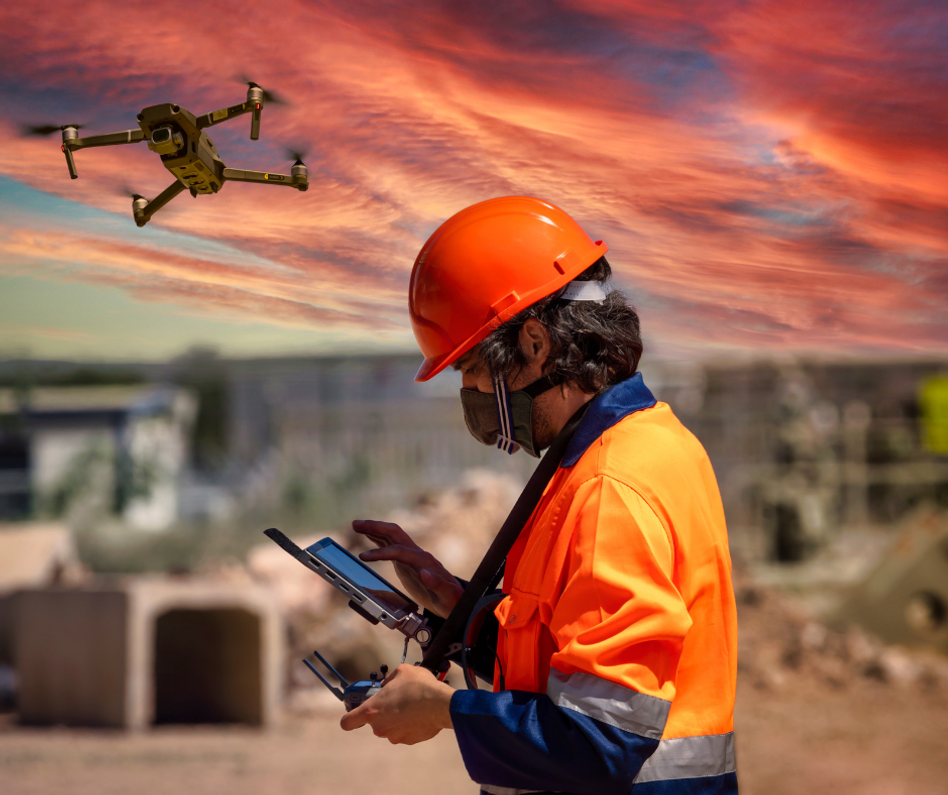The Role of Drones in Fall Hazard Prevention: Identifying Risks Before Work Begins
Falls are one of the leading causes of injuries and fatalities in construction, making fall hazard prevention a top priority for contractors and site managers. Identifying potential risks before work begins is crucial, and thanks to modern technology, drones are proving to be a game-changer in this effort. By providing real-time aerial views, capturing high-resolution images, and assisting in site analysis, drones help improve safety and reduce workplace accidents.
How Drones Enhance Fall Hazard Prevention
1. Site Surveys and Risk Assessments
Before workers even set foot on a job site, drones can conduct comprehensive aerial surveys. These high-resolution images and 3D mapping capabilities allow safety managers to identify fall hazards such as unstable surfaces, unprotected edges, and improper scaffolding setups. Traditional site inspections may take hours or even days, while drones can complete them in minutes with greater accuracy.
2. Monitoring Elevated Work Areas
Drones provide an extra set of eyes in high-risk areas, especially on scaffolding, rooftops, and multi-story structures. By capturing real-time footage, supervisors can assess whether workers are using proper fall protection equipment and adhering to OSHA regulations. If any hazards are detected, immediate action can be taken before an incident occurs.
3. Enhancing Safety Planning and Training
Data collected by drones can be used to create detailed safety plans. By analyzing drone footage, safety teams can develop better strategies for fall protection, including where to place guardrails, anchor points, and netting. Additionally, these visuals can be used in safety training sessions to educate workers on common fall risks and proper precautions.
4. Emergency Response and Incident Investigation
In the unfortunate event of an accident, drones can assist in rapid response and post-incident analysis. They can provide real-time footage of hard-to-reach areas, helping emergency teams navigate the safest routes for rescue operations. Additionally, drone data can be used to investigate incidents, determining the root causes and preventing similar accidents in the future.
5. Reducing the Need for Hazardous Inspections
Traditionally, inspecting high structures and difficult-to-reach areas required workers to physically climb scaffolding, ladders, or roofs—exposing them to significant fall risks. Drones eliminate the need for these risky inspections, allowing safety personnel to assess conditions from the ground, reducing exposure to dangerous heights.
The Future of Drone Technology in Fall Protection
As drone technology continues to advance, the potential applications for fall hazard prevention will expand. Innovations such as AI-powered hazard detection, automated real-time safety alerts, and integration with Building Information Modeling (BIM) will further enhance job site safety.
By incorporating drones into construction site safety protocols, companies can proactively identify risks, reduce the likelihood of falls, and ultimately create a safer working environment for everyone. Investing in drone technology is not just a step forward in efficiency—it’s a leap forward in worker protection.
Recent Posts
-
Best Practices for Scaffold Safety Training on the Job
When it comes to scaffolding, safety isn’t optional—it’s essential. Proper scaffold safety training …Oct 31st 2025 -
How to Set Up a Temporary Work Platform in Tight Spaces
Work Smarter (and Safer) When Space Is Limited Not every job site offers wide-open space to set up s …Oct 30th 2025 -
Ladders & Platforms for Light Installers: A Safety-First Guide
The holidays bring out everyone’s creative side, and for professional light installers, that means l …Oct 30th 2025



